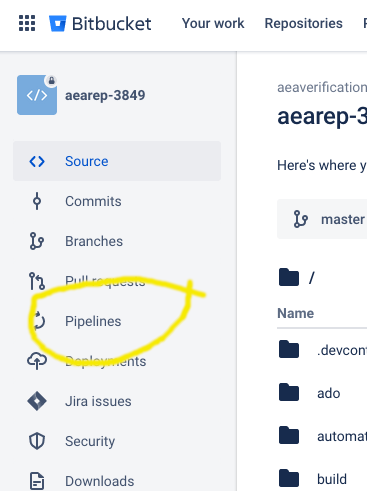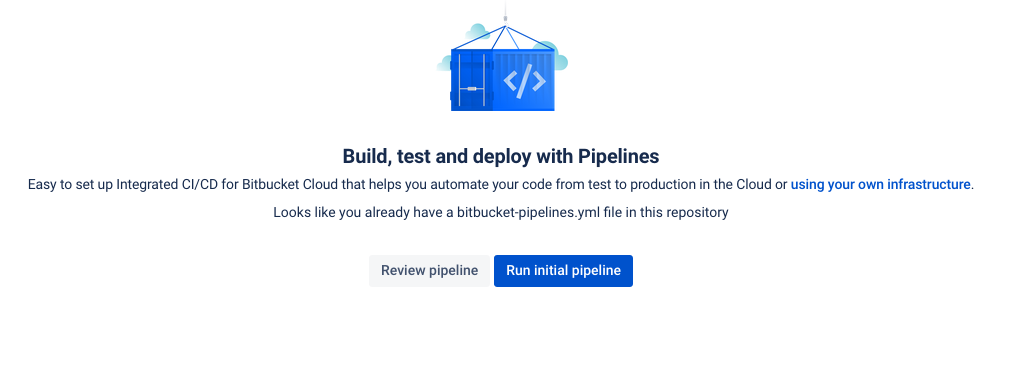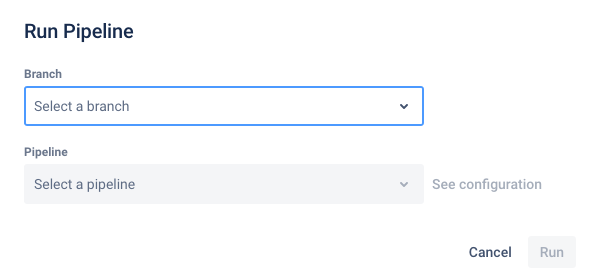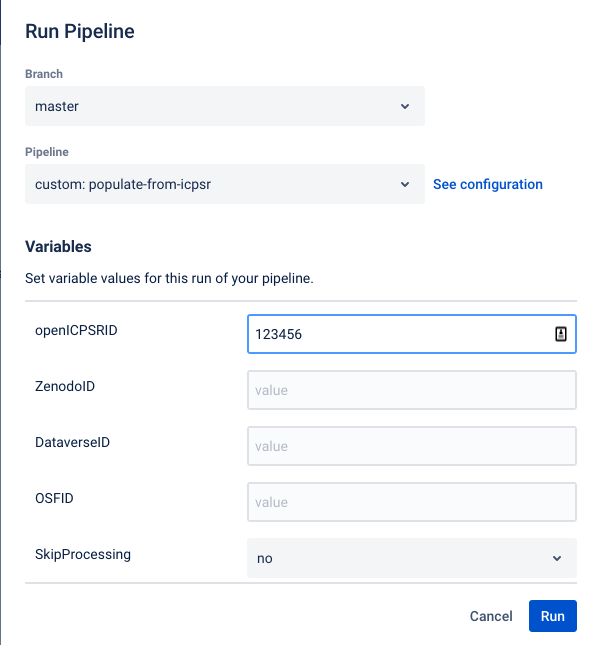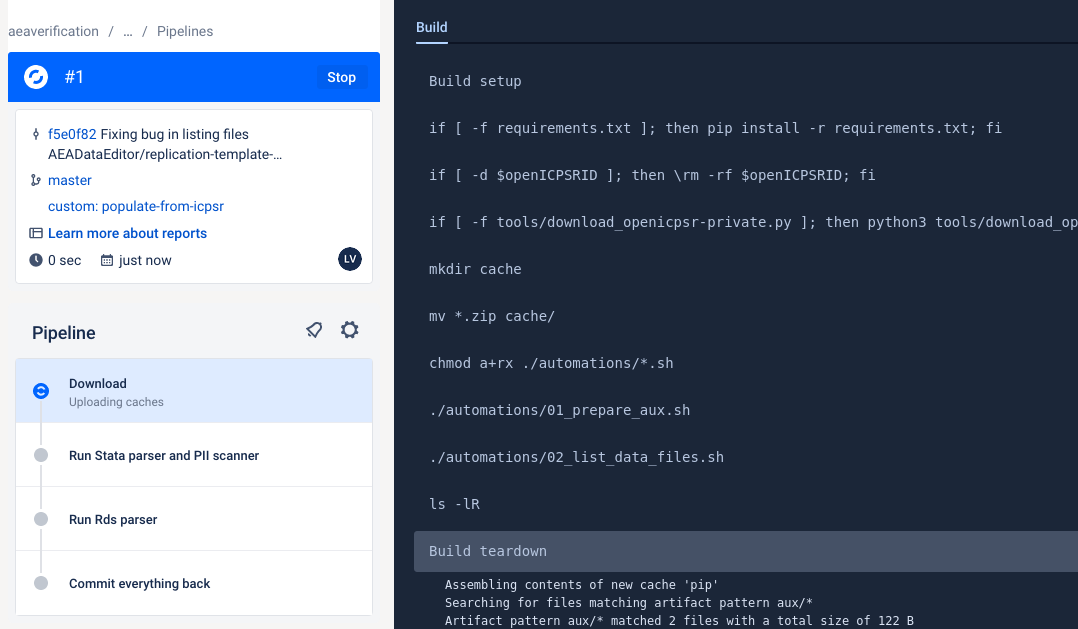In Progress#
The first thing you must do is to advance the ticket from Open to In Progress.
This lets us know that you have started working on replication.
Note
The link to JIRA is https://aeadataeditors.atlassian.net/jira (requires login).
Warning
Is the current Jira issue an original report (first time we see the manuscript) or is it a revision (we’ve seen the manuscript before)?
Check the
MCStatusfield:If it says “
RR” or “CA”, then it is an “original report” - proceed.If it says “
CARevision”, then it is … a revision!Follow the instructions at “Revision reports after author resubmission”.
In particular, do NOT create a new repository - you will re-use the previous repository.
In particular, do NOT create “update” or “new” directories The current state of the repository should always correspond to the author’s structure. Overwrite files, delete files. The previous state is preserved in Git. This will also tell you what files have changed.
When running a second replication on the same archive, please be sure to have the committed “REPLICATION.md” be accurate when you commit it - do not let it contain holdover data from a previous replication attempt, as this can lead to confusion.
Creating a repository#
Warning
In some instances, somebody else has already created a repository. Always check first if the Bitbucket short name is already filled out. If yes, skip this section and go to Collecting information!
start by creating a repository using the import method
copy-paste from this URL to the URL field (this is also available in the Jira dropdown “Shortcuts”)
https://github.com/AEADataEditor/replication-template
the repository name should be the name of the JIRA issue, in lower case (e.g.,
aearep-123)Be sure that
aeaverificationis always the “owner” of the report on Bitbucket.The Project should be the abbreviation of the journal (e.g. “JEP”)
Keep the other settings (in particular, keep this a private repository).
Click
Import RepositoryKeep this tab open!
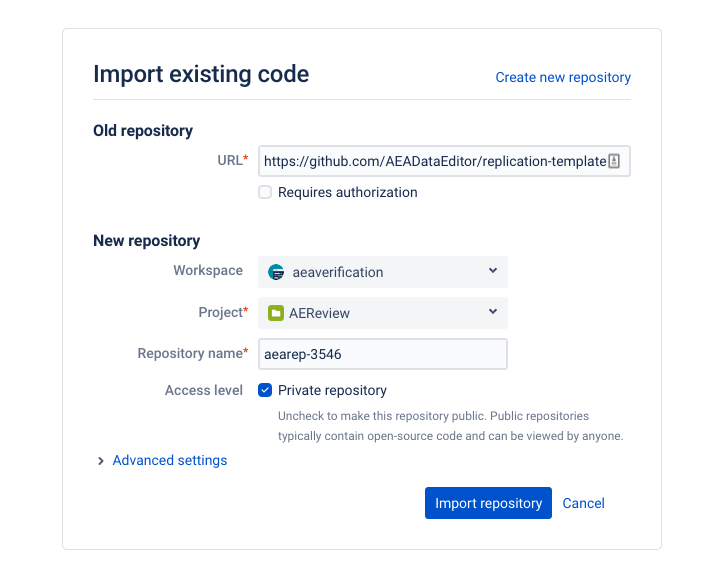
We have now created a Bitbucket repo named something like aearep-123 that has been populated with the latest version of the LDI replication template documents!
Collecting information#
At this stage, you are collecting information.
Fill out the following fields in the Jira ticket (some may be pre-populated):
Replication package URLIn almost all cases, this is the openICPSR repo for which you will have received a notification email.If code and/or data are provided by email,
Replication package URLshould be filled out with “https://email”, otherwise with a DOI or URL.
JournalManuscript Central identifierBitbucket short name(e.g.,aearep-123)this should then auto-fill
Git working location.
The following fields, located in the REPL. INFO tab area 2 of the screen, must also be filled out:
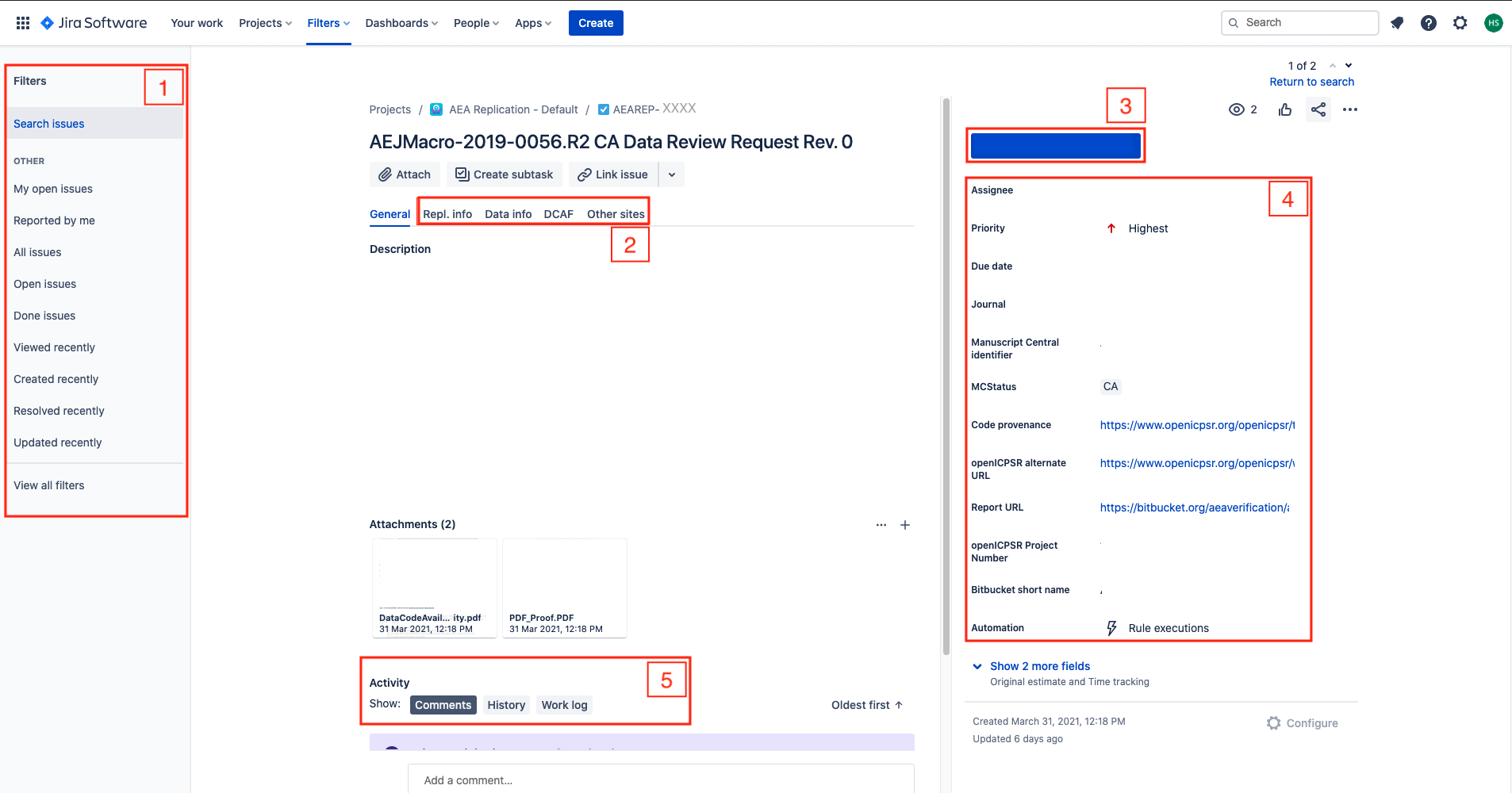
Empirical Article: “Does the article contain empirical work, simulations, or experimental work?”typically the answer should be “Yes”. You should answer “No” only if you read the article and find that it is entirely theoretical, no simulations or empirical work at all.
RCT: Is the paper about a randomized control trial? This should be immediately obvious from the abstract.RCT NUMBER: If it is an RCT, fill in the associated RCT registration number (typically in the title page footnote)
You can now proceed to change the status to Code.

